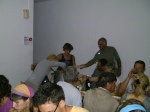Poet Carol Anne Duffy, was presented with a butt (720 bottles) of sherry at a recent ceremony in Jerez, Spain, to celebrate her appointment as Poet Laureate.
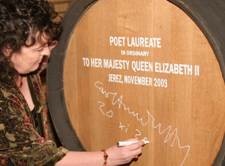
Carol Ann Duffy signs her butt of sherry.
The Sherry Institute of Spain revived the old tradition of paying The Poet Laureate a ‘butt of sack’ when Ted Hughes was appointed Laureate in 1984. Andrew Motion was also presented with more sherry than he could possibly drink when he took up the Laureate mantel in 1999.
The press release that the Sherry Institute sent me includes a rather banal quote from Duffy. ‘With your Third British Poet Laureate standing here, I think we can say that we have a tradition – and a lovely connection between two countries who value both poetry and great Sherry.’
I think Duffy is a fantastic poet – funny, insightful, original – so I was disappointed to read this bland sentence, especially as wine is one of my favourite topics and I love seeing it described in a way that is poetic and full of life. So I pulled my copy of Duffy’s poems The World’s Wife off the shelf and had a look to see if I could find anything about wine.
I did in the poem Mrs Midas. The poem is the story of Midas who is granted a wish by Dionysus, he asks for a special power so that everything he touches turns to gold. When he comes home to Mrs Midas she pours him a glass of wine ‘with a shaking hand, a fragrant bone dry white from Italy, then watched as he picked up the glass, goblet, golden chalice, drank.’
Here wine is a metaphor for the simple, everyday pleasures in life, something special that brightens up a quiet evening, something that has now been lost in a foolish pursuit of extreme wealth. It is the sort of witty and intelligent, feet on the ground, writing that has earned Duffy so many fans.
I hope Duffy enjoys her butt of sherry especially as I doubt that she would let such a generous accolade go to her head.
Here is Mrs Midas in full:
Mrs Midas by Carol Ann Duffy
It was late September. I’d just poured a glass of wine, begun
to unwind, while the vegetables cooked. The kitchen
filled with the smell of itself, relaxed, its steamy breath
gently blanching the windows. So I opened one,
then with my fingers wiped the other’s glass like a brow.
He was standing under the pear tree snapping a twig.
Now the garden was long and the visibility poor, the way
the dark of the ground seems to drink the light of the sky,
but that twig in his hand was gold. And then he plucked
a pear from a branch – we grew Fondante d’Automne –
and it sat in his palm like a light bulb. On.
I thought to myself, Is he putting fairy lights in the tree?
He came into the house. The doorknobs gleamed.
He drew the blinds. You know the mind; I thought of
the Field of the Cloth of Gold and of Miss Macready
He sat in that chair like a king on a burnished throne.
The look on his face was strange, wild, vain. I said,
What in the name of God is going on? He started to laugh.
I served up the meal. For starters, corn on the cob.
Within seconds he was spitting out the teeth of the rich.
He toyed with his spoon, then mine, then with the knives, the forks.
He asked where was the wine. I poured with shaking hand,
a fragrent, bone-dry white from Italy, then watched
as he picked up the glass, goblet, golden chalice, drank.
It was then that I started to scream. He sank to his knees.
After we had both calmed down, I finished the wine
on my own, hearing him out. I made him sit
on the other side of the room and keep his hands to himself.
I locked the cat in the cellar. I moved the phone.
The toilet I didn’t mind. I couldn’t believe my ears:
how he’d had a wish. Look, we all have wishes; granted.
But who has wishes granted? Him. Do you know about gold?
It feeds no one; aurum, soft, untarnishable; slakes
no thirst. He tried to light a cigarette; I gazed, entranced,
as the blue flame played on its luteous stem. At least,
I said, you’ll be able to give up smoking for good.
Seperate beds. In fact, I put a chair against my door,
near petrified. He was below, turning the spare room
into the tomb of Tutankhamun. You see, we were passionate then,
in those halcyon days; unwrapping each other, rapidly,
like presents, fast food. But now I feared his honeyed embrace,
the kiss that would turn my lips to a work of art.
And who, when it comes to the crunch, can live
with a heart of gold? That night, I dreamt I bore
his child, its perfect ore limbs, its little tongue
like a precious latch, its amber eyes
holding their pupils like flies. My dream-milk
burned in my breasts. I woke to the streaming sun.
So he had to move out. We’d a caravan
in the wilds, in a glade of its own. I drove him up
under cover of dark. He sat in the back.
And then I came home, the women who married the fool
who wished for gold. At first I visited, odd times,
parking the car a good way off, then walking.
You knew you were getting close. Golden trout
on the grass. One day, a hare hung from a larch,
a beautiful lemon mistake. And then his footprints,
glistening next to the river’s path. He was thin,
delirious; hearing, he said, the music of Pan
from the woods. Listen. That was the last straw.
What gets me now is not the idiocy or greed
but lack of thought for me. Pure selfishness. I sold
the contents of the house and came down here.
I think of him in certain lights, dawn, late afternoon,
and once a bowl of apples stopped me dead. I miss most,
even now, his hands, his warm hands on my skin, his touch.

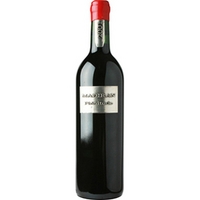
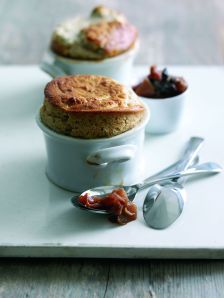
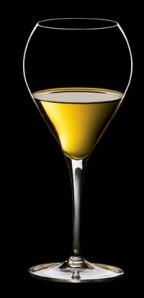
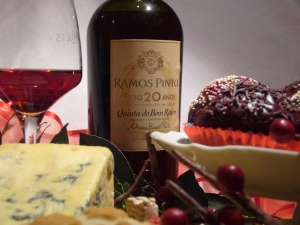
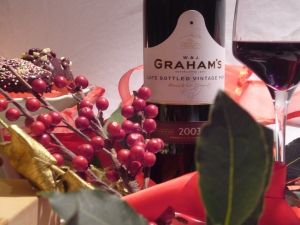
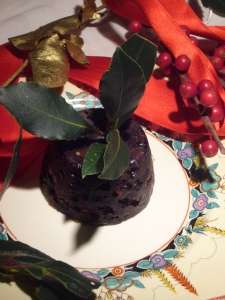

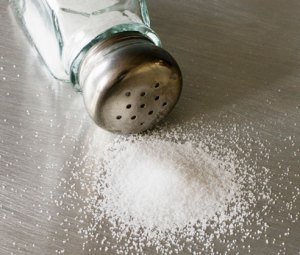
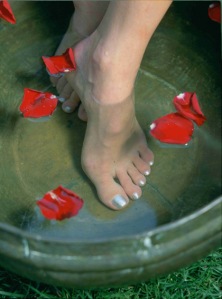
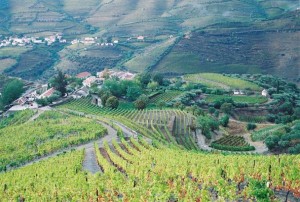
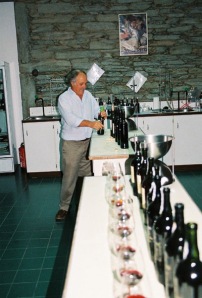


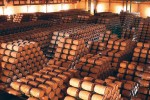 Small wonder then that Bodega LAN takes wood very, very seriously and has built a huge barrel room which they describe as a ‘cathedral to wood’. As I’d seen quite a few cathedrals on my pilgrimage, culminating in the Barroque exuberance that is the Cathedral in Santiago de Compostela, I initially thought Lan’s description was self-aggrandising but when I walked into the huge, vaulted, sweet smelling chamber, stacked high with barrels, and felt the room’s quiet atmosphere, I decided it was appropriate.
Small wonder then that Bodega LAN takes wood very, very seriously and has built a huge barrel room which they describe as a ‘cathedral to wood’. As I’d seen quite a few cathedrals on my pilgrimage, culminating in the Barroque exuberance that is the Cathedral in Santiago de Compostela, I initially thought Lan’s description was self-aggrandising but when I walked into the huge, vaulted, sweet smelling chamber, stacked high with barrels, and felt the room’s quiet atmosphere, I decided it was appropriate.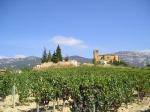
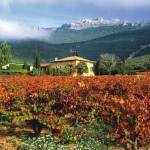
 Appropriately one of my last wines in Spain was not from Rioja but from Galicia, where my pilgrimage ended. It is made by Mar de Frades, a sister company to Ramón Bilbao. There is a lovely story that alleges that Albariño is the same as Riesling and was brought to Galicia by monks travelling from the Rhine to Santiago de Compostela. Science has proved this not to be the case, (once again spoiling a good story!) but Mar de Frades, Albariño has a zingy, salty quality that reminds me of the sea at Finisterre. It is fitting that the last stop on my Rioja wine tour reminds me of my last stop on the Way of Saint James.
Appropriately one of my last wines in Spain was not from Rioja but from Galicia, where my pilgrimage ended. It is made by Mar de Frades, a sister company to Ramón Bilbao. There is a lovely story that alleges that Albariño is the same as Riesling and was brought to Galicia by monks travelling from the Rhine to Santiago de Compostela. Science has proved this not to be the case, (once again spoiling a good story!) but Mar de Frades, Albariño has a zingy, salty quality that reminds me of the sea at Finisterre. It is fitting that the last stop on my Rioja wine tour reminds me of my last stop on the Way of Saint James.
 religion or politics in public is usually inappropriate but it’s hard not to mention the R word when you are on a pilgrimage.
religion or politics in public is usually inappropriate but it’s hard not to mention the R word when you are on a pilgrimage.
